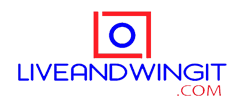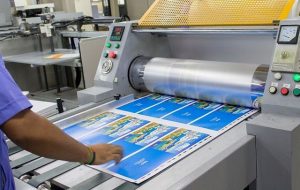Looking for a guide on How to Start a Printing Business in Nigeria with a business plan to boot alongside? (Check below for the plan)
Read this article to get started.
How to set up a Printing Business in Nigeria
Setting up a printing business in Nigeria involves several steps. Here is a step-by-step guide to help you get started:
- Conduct Market Research: Research the printing industry in Nigeria to understand the demand, competition, and trends. Identify your target market and assess the potential for your printing business.
- Define Your Printing Services: Determine the specific printing services you want to offer, such as business cards, flyers, brochures, banners, or customized printing. Specializing in a particular niche can help you stand out and attract specific clientele.
- Develop a Business Plan: Create a comprehensive business plan that outlines your printing business objectives, target market, pricing strategy, marketing plan, operational requirements, and financial projections. This plan will serve as a roadmap for your business and help you secure funding if needed.
- Secure Funding: Determine the startup costs for your printing business, including equipment, supplies, rent, licenses, marketing, and personnel. Explore funding options such as personal savings, loans, grants, or partnerships to finance your business.
- Register Your Business: Register your printing business with the Corporate Affairs Commission (CAC) as a limited liability company. Obtain all necessary licenses and permits required by regulatory bodies such as the Nigeria Printing and Publishing Council (NPPC).
- Set Up Your Workspace: Lease or purchase a suitable space for your printing business. Consider factors such as size, accessibility, electrical capacity, ventilation, and storage requirements. Create a comfortable and functional workspace for your staff and equipment.
- Acquire Equipment: Invest in printing equipment suitable for your chosen services. This may include digital printers, offset printers, large format printers, cutting machines, laminators, and computers with graphic design software. Research reputable suppliers and consider factors such as quality, durability, and after-sales support.
- Source Printing Materials: Establish relationships with reliable suppliers of printing materials such as ink, paper, cardstock, printing plates, toner cartridges, and other consumables. Ensure you have a steady supply of quality materials at competitive prices.
- Hire and Train Staff: Recruit skilled personnel, such as graphic designers, printing technicians, and administrative staff, based on the size and needs of your printing business. Provide training on equipment operation, printing techniques, quality control, customer service, and safety procedures.
- Develop a Marketing Strategy: Create a marketing plan to promote your printing services. Utilize various channels such as online marketing, social media, local advertising, networking with businesses, and participating in trade shows or industry events. Showcase your portfolio, offer competitive pricing, and provide excellent customer service to attract clients.
- Build Relationships: Develop relationships with local businesses, event planners, marketing agencies, and other potential clients who may require printing services. Offer discounts for bulk orders or referral incentives to encourage repeat business and word-of-mouth recommendations.
- Maintain Quality and Customer Service: Focus on delivering high-quality printing and excellent customer service. Ensure timely delivery, attention to detail, and responsiveness to customer inquiries or concerns. Regularly update your printing techniques, invest in staff training, and stay updated with industry trends.
Remember to comply with copyright laws, respect intellectual property rights, and maintain ethical business practices. Continuously evaluate and adapt your strategies based on market feedback and changing customer needs to ensure the success and profitability of your printing business in Nigeria.
What Equipment Do I Need to Start a Printing Business
To start a printing business in Nigeria, you will need a range of equipment to support different printing services. The specific equipment required may vary depending on the types of printing services you plan to offer. Here are some essential equipment commonly used in printing businesses:
- Printers: Invest in digital printers and/or offset printers based on your business requirements. Digital printers are suitable for short-run and on-demand printing, while offset printers are used for high-volume and commercial printing. Consider the size and specifications that meet your needs.
- Cutting Machines: Cutting machines, such as guillotine cutters or digital cutting systems, are essential for trimming printed materials to the desired size and shape. This equipment ensures clean and precise cuts.
- Large Format Printers: If you plan to offer large format printing services for banners, posters, or signage, invest in large format printers. These printers are designed to handle wider and larger print media.
- Laminators: Laminators are used to apply protective coatings on printed materials, such as laminating films or pouches. They help enhance durability, resistance to moisture, and provide a professional finish.
- Binders: Binding equipment is necessary if you plan to offer binding services for books, reports, or presentations. Options include comb binders, coil binders, or thermal binders.
- Plate Making Equipment: If you plan to offer offset printing services, you will need plate making equipment to create printing plates. This includes plate setters or processors, which expose and develop printing plates.
- Computers and Design Software: Computers equipped with graphic design software, such as Adobe Creative Suite or CorelDRAW, are essential for designing and preparing artwork for printing. Ensure your computers have sufficient processing power and memory for graphic-intensive tasks.
- Prepress Equipment: Prepress equipment includes scanners for digitizing physical artwork or images, color calibration tools to ensure accurate color reproduction, and proofing systems for reviewing and approving print-ready files.
- Finishing Equipment: Depending on the services you offer, you may need equipment such as paper cutters, paper folders, staplers, perforating machines, creasers, or booklet makers to complete finishing touches on printed materials.
- Workstations and Furniture: Provide workstations and furniture for your staff, including desks, chairs, storage cabinets, and shelves. Ensure a comfortable and ergonomic work environment.
- Ancillary Equipment and Supplies: Other essential equipment and supplies include ink cartridges, toner cartridges, printing plates, paper, cardstock, printing blankets, color management tools, measurement instruments, cleaning materials, and packaging supplies.
It’s important to research reputable suppliers, compare prices, and choose equipment that aligns with your budget and business needs. Additionally, consider investing in maintenance and servicing plans to keep your equipment in optimal working condition.
Printing Business Ideas to Succeed in Printing Business
To succeed in the printing business, it’s important to consider innovative printing business ideas that cater to market demands and offer unique value propositions. Here are some printing business ideas to help you stand out and succeed:
- Sustainable Printing: Position your printing business as environmentally friendly by using eco-friendly materials, promoting recycling, and offering carbon-neutral or sustainable printing options. This can appeal to environmentally conscious customers and differentiate your business.
- 3D Printing Services: Embrace the emerging technology of 3D printing and offer 3D printing services for prototyping, product development, customized objects, or architectural models. This can cater to industries such as manufacturing, engineering, healthcare, and design.
- UV Printing: Invest in UV printing equipment that enables printing on various surfaces and materials, including glass, wood, metal, acrylic, and plastics. Offer customized printing services for signage, promotional items, interior décor, or personalized gifts.
- Augmented Reality (AR) Printing: Combine print materials with augmented reality technology to offer interactive and immersive experiences. Create AR-enabled brochures, catalogs, or packaging that can be scanned with a smartphone or tablet to display additional digital content.
- Direct-to-Garment (DTG) Printing: Specialize in DTG printing, which allows high-quality, full-color printing directly onto fabrics. Offer custom printing services for apparel, including t-shirts, hoodies, and other textile products.
- Variable Data Printing: Provide personalized printing services that incorporate variable data, allowing each printed piece to be customized with unique information, such as names, addresses, or personalized messages. This can be appealing for direct mail campaigns, invitations, or targeted marketing materials.
- Specialty Printing: Focus on niche markets by offering specialty printing services. Examples include printing on specialty papers, foil stamping, embossing, letterpress printing, or printing on unusual materials like leather or fabric.
- Print-on-Demand Publishing: Offer print-on-demand services for authors or independent publishers, allowing them to print and distribute books as orders are received. This eliminates the need for large print runs and reduces inventory costs.
- Wall Art and Décor Printing: Print and sell wall art, decals, or wallpaper for home or office decoration. Collaborate with interior designers or home décor stores to showcase your unique designs and printing capabilities.
- Custom Packaging Solutions: Provide customized packaging solutions for e-commerce businesses, including branded boxes, inserts, labels, or product packaging. Offer design services and work closely with businesses to create packaging that aligns with their brand image.
Remember to stay updated with printing trends, invest in high-quality equipment, focus on excellent print quality and finishing, provide exceptional customer service, and effectively market your unique printing offerings. Adapting to customer needs and consistently delivering high-quality results will help your printing business succeed in a competitive market.
Now that you know How to Start a Printing Business in Nigeria, get the business plan below to know all the figures and information for accessing a loan and financial analysis.
How To Download Printing Press Business Plan Sample
Above is a part of the printing press business plan template in Nigeria. If you want the complete printing press business plan sample with the full financial plan, calculations, and more, follow the procedures to download it.
Pay the sum of N8000 (Eight thousand naira only) to the account detail below:
Bank: GTBank
Name: Oyewole Abidemi (I am putting my name and not our company account so you know we are real people and you can trust us)
Ac/No: 0238933625
Type: Saving
Thereafter, send us your email address through text message to +234 701 754 2853. The text must contain the title of the business plan you want and also your email address. Immediately after the confirmation of your payment, we will send the printing press business plan template in Nigeria to your email address where you can easily download it.

